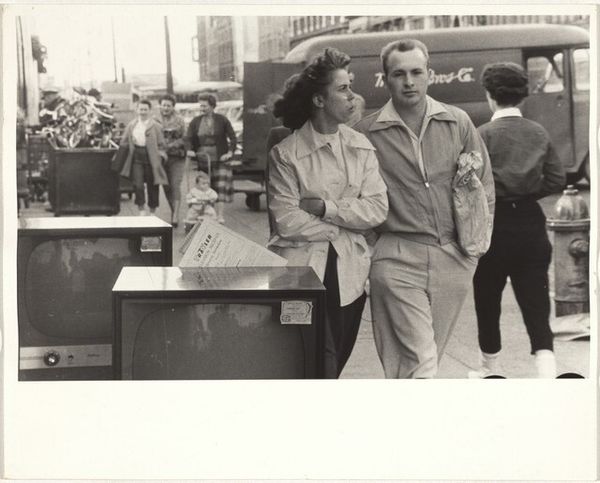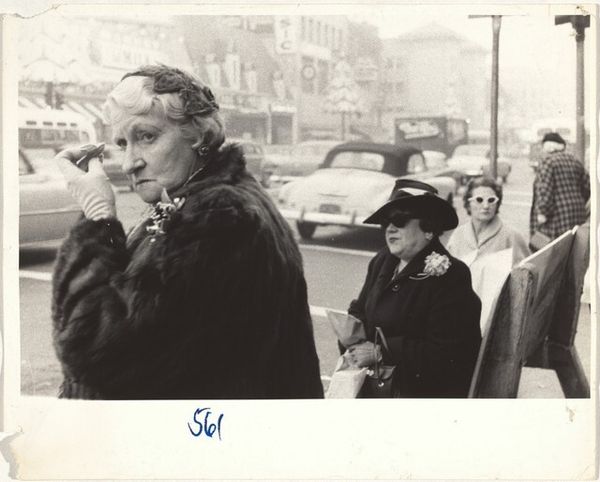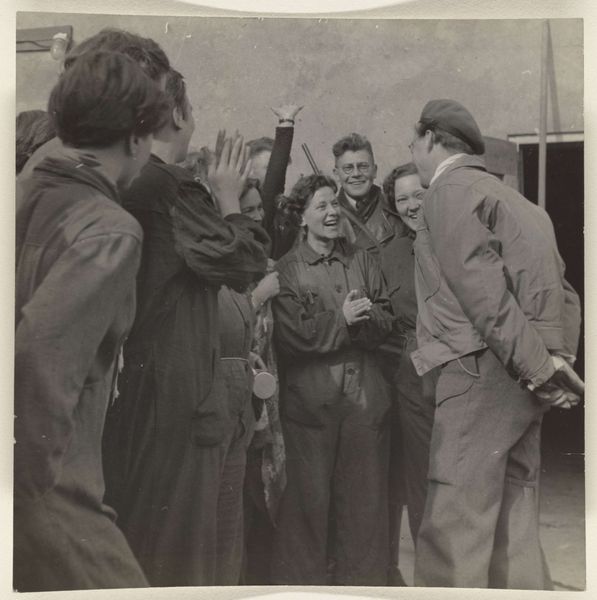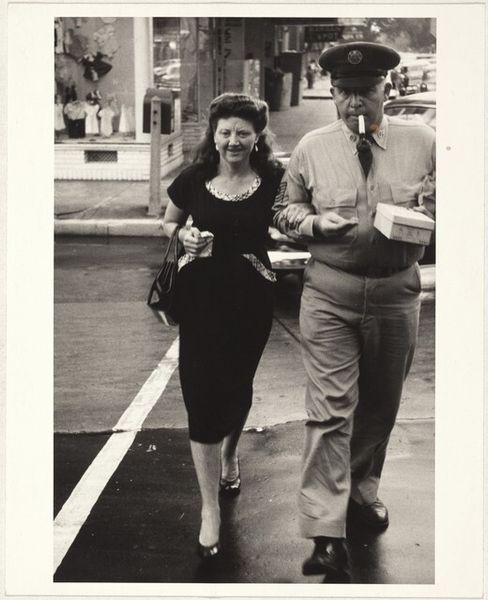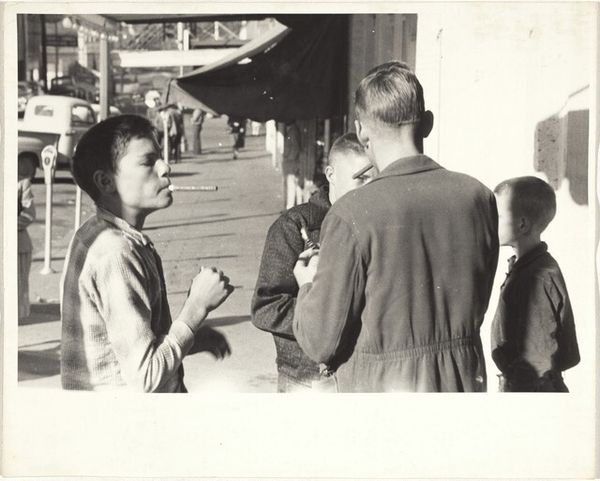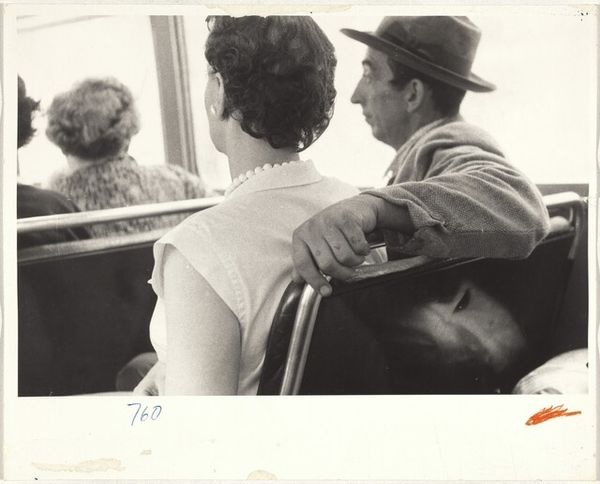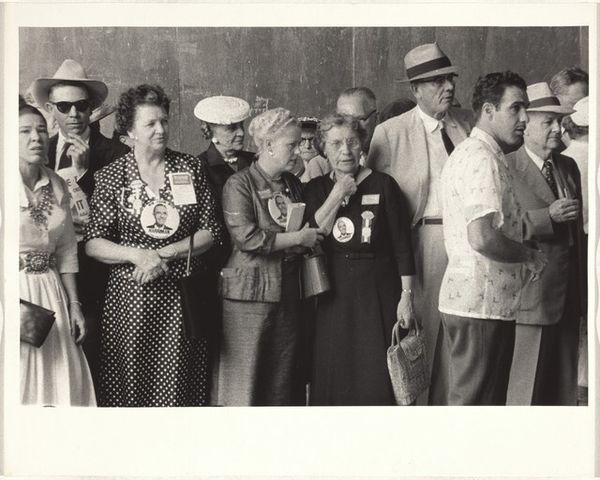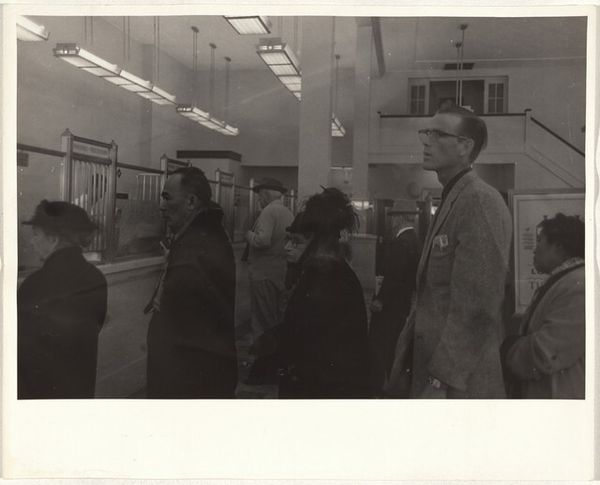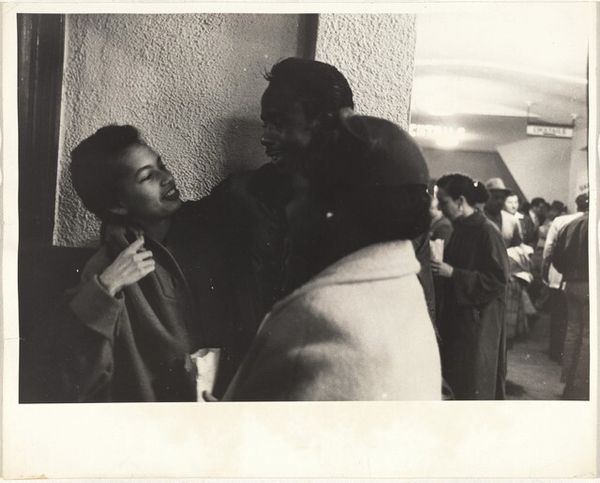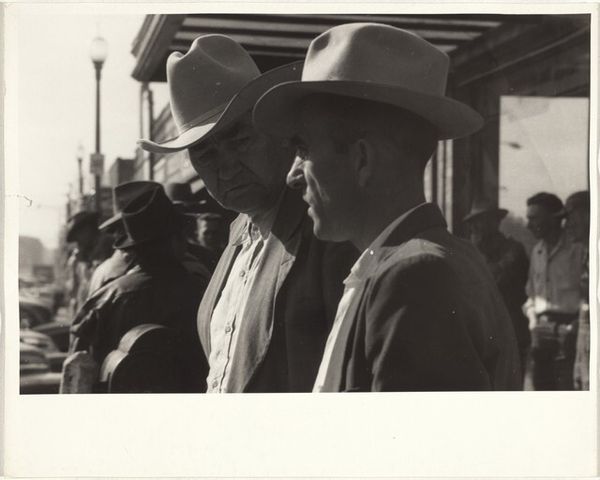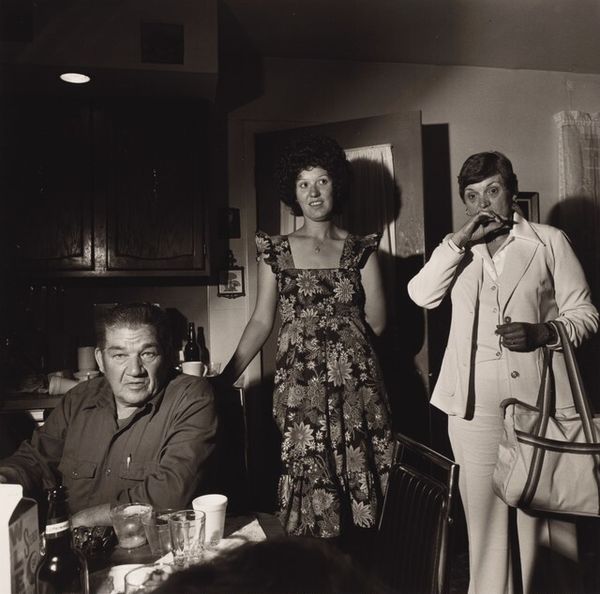
print, photography, gelatin-silver-print
#
portrait
#
print photography
# print
#
street-photography
#
photography
#
gelatin-silver-print
#
pop-art
#
modernism
#
realism
Dimensions: sheet: 20.2 x 25.2 cm (7 15/16 x 9 15/16 in.)
Copyright: National Gallery of Art: CC0 1.0
Curator: Robert Frank’s gelatin silver print, "Women in Hats--San Francisco," from 1956 presents a slice of mid-century American life. Editor: There’s a stark contrast here. The grainy texture lends a somewhat somber tone, especially juxtaposed with the apparent affluence of the women in furs and elaborate hats. It feels like a study in class disparity. Curator: Precisely. The hats, for instance, functioned as status symbols. Think of the hat as more than adornment—a symbolic crown, designating a certain social position. The composition with this uniformed, working class man creates an immediate dialogue. Editor: A dialogue that feels deeply coded, I think. The women, possibly attending a social event, exude an air of composure. He looks like someone working a grueling outdoor job with wind-chapped face—a man somehow on the outside of this performance. The lens captures something of that social separation. Curator: The image possesses an almost documentary rawness. The slight blurring conveys a fleeting, ephemeral moment. Frank captures this candid realism by making his social commentary subtle, woven through his lens. He suggests tensions in the fabric of postwar America without direct statement, which became his trademark. Editor: That tension is palatable. While seemingly just capturing a moment, the composition and subject matter reflect larger social anxieties around race, class, and gender roles prevalent at the time. We are invited to read more in to their narrative, because the subjects aren't just ‘caught unaware’; they hold meaning through context. Curator: Absolutely. It invites introspection, doesn’t it? We become participants in this historical moment and asked to unravel the signs and symbols that represent and preserve cultural memories of the recent past. Editor: Yes. It pushes beyond a simple aesthetic capture to create space for historical and social reflection on 1950's gendered inequalities and working-class invisibility. A silent scream about who holds value in society and whose voice isn’t heard.
Comments
No comments
Be the first to comment and join the conversation on the ultimate creative platform.
